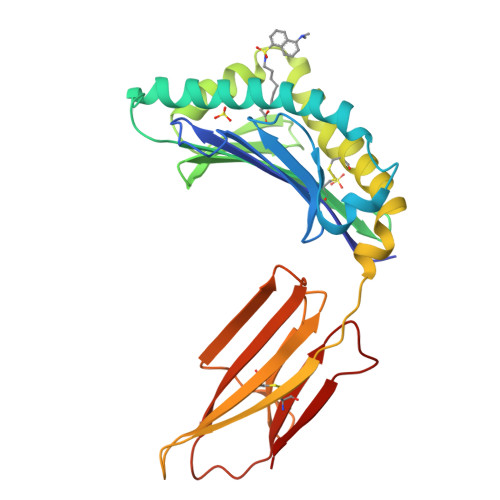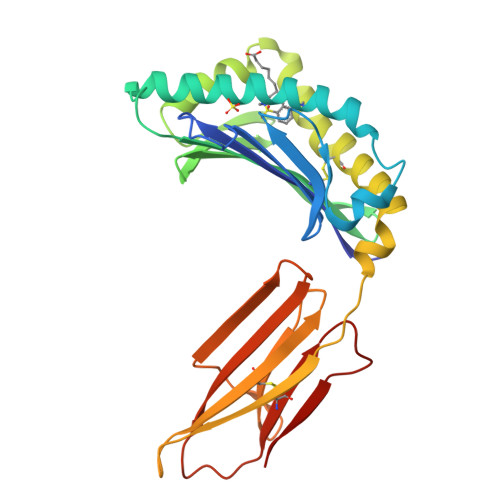Crystal structure of zinc-alpha 2-glycoprotein in complex with a fatty acid reveals multiple different modes of protein-lipid binding.
Lau, A.M., Zahid, H., Gor, J., Perkins, S.J., Coker, A.R., McDermott, L.C.(2019) Biochem J 476: 2815-2834
- PubMed: 31506272
- DOI: https://doi.org/10.1042/BCJ20190354
- Primary Citation of Related Structures:
6R2U - PubMed Abstract:
Human zinc-α2-glycoprotein (ZAG) is a 42 kDa adipokine which regulates body fat mass and is associated with cachexia and obesity. ZAG belongs to the major histocompatibility complex class I protein family and binds long-chain polyunsaturated fatty acids in its groove formed from the α1 and α2 domains. To identify the molecular basis of its lipid-binding function, we determined the first crystal structure at 2.49 Å resolution for fatty acid-bound ZAG, where the ligand was the fluorescent 11-(dansylamino)undecanoic acid (DAUDA). The 192 kDa crystallographic asymmetric unit contained six ZAG and eight fatty acid molecules in unique conformations. Six fatty acid molecules were localised to the ZAG grooves, where their tails were bound in two distinct conformations. The carboxylate groups of three fatty acids projected out of the groove, while the fourth was hydrogen bonded with R73 inside the groove. Other ligand-residue contacts were primarily hydrophobic. A new fatty acid site was revealed for two further DAUDA molecules at the ZAG α3 domains. Following conformational changes from unbound ZAG, the α3 domains formed tetrameric β-barrel structures lined by fatty acid molecules that doubled the binding capacity of ZAG. Analytical ultracentrifugation revealed that ZAG in solution was a monomer in the absence of DAUDA, but formed small amounts of tetramers with DAUDA. By showing that ZAG binds fatty acids in different locations, we demonstrate an augmented mechanism for fatty acid binding in ZAG that is distinct from other known fatty acid binding proteins, and may be relevant to cachexia.
Organizational Affiliation:
Department of Structural and Molecular Biology, University College London, Darwin Building, Gower Street, London WC1E 6BT, U.K.


























